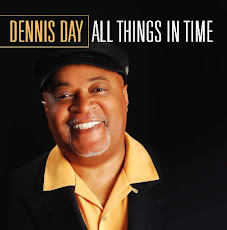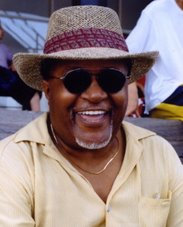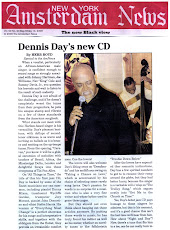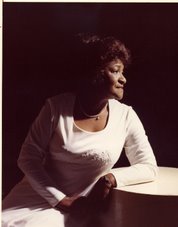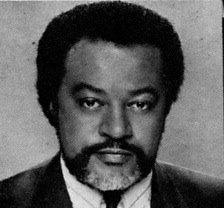Thursday, October 23, 2008
AN OPEN LETTER TO SENATOR JOHN McCAIN
Dear Senator McCain:
I want to believe in my heart-of-hearts that you love this country even more than you cherish the notion of a Republican presidential victory. However, if violence were to be fomented against Senator Obama on any level leading up to Election Day, November 4, even a Republican victory would prove a hollow one, void of meaning and incapable of exercising the moral leadership that will be needed to heal the irreparable rupture sure to follow within our racially polarized nation.
Our history has shown us that during times of economic hardship, racial and ethnic minorities and their leaders are susceptible to becoming targets of inflammatory rhetoric, even to the point of inciting riots and bloodshed in our nation’s streets. Today we see a vicious cancer of negative emotion spreading rapidly by the intentional efforts of the McCain/ Palin campaign, and you sir must help to surgically excise it from our body politic.
You, Senator McCain, can take charge by exerting the moral authority that so many ascribe to you, simply by firmly and consistently denouncing the hate language, race baiting, and fear mongering spewed from your supporters at Republican campaign events and the zealots using media to sew seeds of ethnic division and racial hatred.
If you, sir, were to forcefully address the nation specifically on this issue, much in the manner that Senator Obama did before a national television audience in Philadelphia last February in his speech on “Race in America,” you could go down in history as a great American healer and not a divider. Moreover, you will achieve a legacy as one of this nation's most courageous political leaders in history, whether you win or lose the presidential election. Such a bold, non-partisan act of moral clarity and leadership by you is especially needed during these times of great economic and personal insecurity
You decide. On which side of history do you choose to stand? The world is watching.
Best regards,
Dennis Day
New York New York
Saturday, September 6, 2008
Campaign ’08 – Identity Politics Deja vous All Over Again
In 1975, one of the epochal struggles challenging historical views of identity politics was particularly hard fought in Barack Obama’s home State of Illinois. I was a young staffer assigned to the Illinois Speaker of the House’s Committee on Cities and Villages, where I was privileged to witness first-hand the workings of the political process with its built-in checks and balances. I saw how such a system can alter history’s trajectory or sustain the status quo.
During that turbulent era, the war in Vietnam dominated our politics. Images of flag-draped body bags, jungle fire fights, and air lifts of orphaned Vietnamese refugees flooded our living rooms on the major television networks. On the home front, the introduction of the Equal Rights Amendment (ERA), designed to create gender equality, made its way through the process to be ratified in our U.S. Constitution after incessant philibustering, but fell short when the three states needed to constitute a three-fifths majority – Florida, North Carolina, and Illinois – rejected the initial ERA amendment, curtailing its re-introduction before the U.S. Congress for several years.
Political hardball and cultural wars have long been hallmarks in Illinois, a state historically plagued by its deep regional and racial divides. Political residue from a divisive Civil War and the ensuing Reconstruction period often pitted Northern Illinois special interests against those of Southern Illinois, resulting in shrewd political in-fights between a formidable Richard J. Daly Democratic machine in the state’s urban North and moderate Democrats and their predominately white conservative counterparts from counties in the South. These dynamic demographics forged the rough-and-tumble political milieu in which the young State Senator Barack Obama earned his political stripes as a “post-racial,” organizationally savvy leader, skilled at building unlikely political consensus between liberal progressives and rural conservatives. Ironically, it is precisely the same challenge on a national scale that now presents the greatest challenge to an Obama presidency.
In the mid 70’s Illinois’ Southern and Central districts, bound together by shared agricultural rural economic alliances, were largely committed to conservative, Dixiecrat-style politics of the good-ole’-boy variety. Political loyalties forged by upstate versus downstate regional and cultural values were shaped against a backdrop of big-city democratic progressive political forces led by two dynamic African American political leaders from Chicago’s South Side; the Illinois Senate’s President pro tem, Cecil Partee, and Senator Harold Washington, Chairman of the Judiciary Committee, who within less than a decade would become Chicago’s first black Mayor.
Each day the political drama would unfold and build to a feverish pitch in the Illinois Statehouse as the nation focused its attention on the Land of Lincoln and the political maneuvering willed by upstate Daly loyalists seeking to balance the demands of urban female proponents of the ERA against the conservative tide of well-organized downstate ERA opponents led by the conservative Phyllis Schafley. The media frenzy that shrouded the Illinois Statehouse in those heady days homed in on celebrity activist speakers like Marlo Thomas (of “That Girl” fame and later paramour to Phil Donahue) and Alan Alda, whose top-rated television serial M*A*S*H had given him a high profile and bully pulpit from which to support the ERA.
In 1975 when an anonymous group of staffers, including Illinois legislators, circulated a mock bill to re-name the Playboy Bunny as Illinois State Animal under the pseudonym Rabbiscus Bustus, the mocking good-ole’-boy levity generated by this joke was shared across the Illinois Assembly’s political aisles by a largely male-dominated General Assembly, Democrats and Republicans alike, who would soundly defeat the ERA. The Equal Rights Amendment was intended to address political and economic disparities faced by women, but after multiple attempts, is still not ratified by enough states to become part of the U.S. Constitution.
The mid-70’s drama played out in the Illinois House and Senate chambers pitted rural against urban voters, hawks against doves, bra- and flag-burners against militarists, and blacks against whites, further deepening the divisions between conservatives and liberals. The period was a watershed for the emerging subtext of identity politics – a precursor to today’s so-called cultural wars, which play out in terms of “blue” versus “red” constituencies. In the mid 70’s, nearly a decade after passage of the Civil Rights and Voting Rights Acts of 1965, only one black United States Senator had been elected since Reconstruction; Senator Ed Brooke (R) of Massachusetts. In 1972 there were only 1,469 black elected officials in the United States. By 2000, according to the Joint Center for Political Studies, there were 9,040 black elected officials. In 1975, the U.S. Congress comprised only 4% women, while 10% of all elected officials nationwide were women and 5% of all U.S. mayors were women.
As I look back upon my brief tenure in the service of the Speaker of the House of the Illinois State Assembly, iconic images in my memory capture challenges that linger even after three decades of struggle for equality of opportunity and equal justice under the law for minorities and women. In the Spring of 1975, Comedian Dick Gregory, in a near death-defying act of moral civil disobedience, chained himself to the inner Rotunda of the Illinois State House and waged a heroic fast that nearly ended his life. Phyllis Schafley and Marlo Thomas became poster women for the conservative right and liberal feminism respectively, while Illinois State representative Susan Catania garnered national publicity defying all social norms of the period by bringing her infant child in bassinette on to the floor of the Assembly, discreetly breastfeeding as she passed legislation, arguing that a child needs a nurturing parent.
In this year’s 2008 presidential campaign, once again a media firestorm rages regarding a woman’s role within the workplace and in leadership as Republican Sarah Palin has chosen to accept her party’s nomination for Vice President. Palin’s decision, as a mother of five including a four-month-old infant with Downs Syndrome, has jolted more than a few Good Ole Boys, even among media pundits concerned over a mother’s capacity to serve as both leader of the free world and a sufficiently loving, attentive mom. Critics have been quick to point out that the question of whether a father is capable of the same would never be broached in a major election. Thus, the cultural wars continue.
The ERA was never fully ratified, yet women have made steady gains in the realm of politics and other fields of human endeavor. The last laugh in 2008 may be on that generation of anonymous good old boys who constitute that viral resistant strain of irrational racism and debilitating chauvinism that threatens to derail the great American experiment. They will have to get over it and select either an African American man as President or a self-proclaimed hockey mom as Vice President. To close with a cliché from the 70’s I’ll simply say on behalf of each of these historical candidates – You’ve come a long way, baby!
Tuesday, May 13, 2008
“All Things in Time” – New jazz CD coming in July
Music has played such a significant role in my life that, whatever pursuits and challenges have engulfed me, my passion for music has beckoned me back into its warm embrace like a torrid love affair.
My new CD “All Things in Time” will be released on my birthday this year – July 16, 2008. This project is for me a musical career highlight allowing me to share a bit of my soul by singing lyrical stories that I hope will entertain, soothe, amuse, and stir soulful reflection for generations now and to come.
The great musicians appearing on my CD share a singular common trait; an abiding love and deep appreciation for our great African-American jazz tradition. Many of these great artists continue to shape the music’s global evolution as major jazz innovators. I am deeply grateful to call many of these artists friends. They have played a big part in my musical odyssey over the years.
I hope that newly initiated listeners and old fans who have wondered what might have happened to me will take the journey with me and find enduring enjoyment in the 12 great American songs and medleys presented here. Above all, I give honor to God through whom all blessings flow.
Even though the CD isn’t released yet, Herb Boyd, one of America’s finest writers and a notable jazz critic, has penned a review that appeared in the Amsterdam News this week (May 8 – 14) (See attached). All that is needed now is for those of you who love the music to help sustain it by supporting it. I’ll keep you posted when the CD is released.
Thursday, May 8, 2008
America - Yes, They Can!
The candidacy of Barak Obama this year has offered urban educators precisely what pedagogical types refer to as that coveted “teachable moment.” Obama’s candidacy when, framed by a masterful teacher like Mr. Jackson Shafer in the Bronx High School for Performance and Stagecraft, as seen in the video posted here [See link on left], offers a platform to engage students in their favorite subject: ME. Mr. Shafer’s students explore how, as individuals and collectively, the Obama narrative connects with their own lives and personal challenges. In Obama’s quest they are able to see their own possibilities and life potential and to recognize how their individual lives intersect with broader communal, social, and political concerns.
This is learning and teaching at its finest.
Whether or not Senator Barack Obama becomes the Democratic nominee for president of the United States of America in 2008, his emergence as a viable candidate of color continues to inspire millions of minority youth in America and around the world in ways unimaginable.
I hope you agree that this powerful 13-minute video is worth viewing and should be seen in classrooms and among those responsible for the education and uplift of America’s youth.
Tuesday, April 8, 2008
Irresponsible Media Distortions, Manipulation? You be the Judge
This You Tube video clip offers a broader context of Rev.Wright's post 911 sermon than that being shown on Fox TV and other networks that created a firestorm of controversy. Excerpts from other Wright sermons are also being aired out of context. For my commentary,please see my blog post, April 4, Television, Race and Obama .
Friday, April 4, 2008
TELEVISION, RACE, AND OBAMA
In this YouTube age, have mainstream media outlets gone too far in relying on user-generated content – images and sound bites that virtually anyone with a digital camera can post, selectively edit, and manipulate? What is the obligation of editorial staffs within large media conglomerates? Should not media submissions require the same rigorous journalistic standards as traditional print journalism, ensuring that news is reported fairly and accurately to the public?
A blatant example of television’s editorial abuses involved Reverend Jeremiah Wright’s controversial remarks, edited from several sermons preached at Trinity United Church of Christ in Chicago, posted on You Tube, and broadcast ad infinitum on virtually every major television network and cable outlet without benefit of their full context. The networks’ selective editorial use of the Wright clips raises serious concerns regarding television’s responsibility to the viewer.
Ultimately any opportunity for meaningful public discourse is suppressed when television executives neglect to exercise sound editorial standards. By refusing to print or broadcast Wright’s full sermons, relevant material was in fact censored, denying viewers opportunity to form intelligent opinions or engage in further inquiry to become better informed on the merits of the issues presented as fact. Instead, viewers are positioned to internalize the networks’ preferred narrative spin, which often corresponds to the larger political views held by their corporate executives and is far from fair and balanced reporting.
Such reporting must be called out for what it is – propaganda disguised as news. Despite the fact that a story’s broader context is often needed for accurate reporting with journalistic integrity, the increasing frequency with which use of raw private video content is now seen as news prompts further ethical concerns. There is a growing trend for mass media to use video snippets, cloaked as hard news but designed to shape public opinion, as the basis for today’s fast-breaking news stories.
There is a place for eye-witness digital accounts of natural disasters, accidents, or crime scenes shot by ordinary citizens, but in a high-stakes national political contest the presentation of excerpted statements broadcast out of context from their larger complex narratives can be too easily manipulated or exploited for political advantage. Wright’s most controversial statements were aired repeatedly, seeping deep into America’s collective conscience long enough to seriously taint Obama’s post-racial credentials and plummeting his standing in national polls.
Instead of taking the high road, the unspoken conservative media subtext played out as this headline by default: “Birds of a Feather: Trinity Church’s Black Militant Chicago Pastor and His Most Famous Spiritual Disciple, Presidential Candidate Barack Obama Damn Nation.” Wright’s rhetorical flourishes when critiqued out of context can easily be interpreted as unpatriotic and blasphemous. However, the prophetic preaching tradition compels a prospective convert to experience the gospel message in its totality, with all of its nuance, tone, cadence, and body language, mediated by the listener’s predisposition to discern spiritual and biblical truth spoken to power.
Openness to the gospel narrative does not make African American church goers gullible sycophants, incapable of distinguishing good from evil or the sacred from the profane. Christians are challenged to distinguish between human government and God’s kingdom. Such preaching is part of a rich linguistic endowment innate to black oral tradition. Although the term Black Liberation Theology was eventually mentioned to describe Wright’s teachings at the Trinity United Church of Christ, on-air discussions did little to inform viewers about the beliefs and theological tenets of this theology.
Wounded politically, Barack Obama boldly tackled the issue of race head-on in an intimate, authoritative speech on March 18 offered balance, historical perspective, and keen insight into one of the nation’s most intractable problems. Obama took the initiative to push us toward a national dialogue that the mainstream media has been hesitant to engage.
The Wright controversy provided a rare window of opportunity for media and journalists to provide a much-needed analysis and historical perspective for understanding the racial divide – a chance to lead toward solutions. Yet the media in this instance as in too many others, chose to provide too little information too late and thus remains part of the problem.
Sunday, March 2, 2008
The Obama Drama in New York City -- A Black Swan Phenom
Before Super Tuesday most New York Black Democratic leaders had assumed that the former first lady’s position would be firm as the presumptive Democratic nominee – that Iowa had been an electoral fluke, that Senator Obama’s proverbial goose would be cooked, and that politics as usual would prevail in a refurbished Clintonian era with the same old players. Few post-Civil-Rights era politicians could have imagined that the juggernaut of inevitability that energized the Clinton political machine could be so dramatically slowed by an army of grass-roots devotees armed with laptops and i-phones, political neophytes, cyber wonks, socially progressive Democrats, moderate Republicans, and Independents committed to change.
Are we as a nation on the verge of a radical new political transformation that could nullify distinctions of race and gender in the political arena in what some have called a post-racial America? Or is Obama mania an aberration, a black swan?
In his Amazon 2007 best seller, Black Swan, Nassim Nicholas Taleb offers the black swan as a metaphor for a highly improbable event with three principal characteristics: 1) It is unpredictable; 2) it carries a massive impact; and 3) after the fact we concoct an explanation that makes the event appear less random and more predictable than it was. For example, the astonishing success of Google was a black swan; so was 9/11. Taleb writes, “The profundity of black swans is that they change the way people look at the world. Black swans underlie almost everything about the world from the rise of religions to current events.”
The emergence of Senator Barack Obama as the Democratic front runner seems to place him among that rare breed – a black swan, a phenomenon that key Black Democratic party leaders and elected officials in New York failed to see coming. Could New York State’s Black political leadership be trapped in a time warp, unable to heed the tenor of the times? Are they neglecting to adhere to the will of their constituents? By continuing to follow a conventional political course, keen on personal loyalty, party discipline, and consensus around their leadership’s chosen candidate, a preponderance of New York City Democrats elected to public office have been unwavering in their support for the junior Senator from New York.
Held together by ties to Harlem, common political interests, and career aspirations –and with the hope of redeeming old favors – some are still tethered to the Clinton Dynasty of the nineties. But Obama’s unforeseen black-swan impact could well begin to gnaw away at old loyalties.
The tactic of characterizing Obama as inexperienced and unelectable has actually had the countervailing effect of spewing a debilitating message of cynicism, low expectations, and defeat that has been soundly rejected by a new generation of voters who see Obama as the embodiment of hope. By disparaging Barack Obama as a “hope mongerer, long on vision but short on experience,” New York’s democratic leaders have tried to “flip the script” on Obama’s hope narrative by rendering his message of hope and change as fanciful, magical, pie in the sky thinking.
If Obama does win the nomination, Democratic Party leadership in New York City will surely rally around him as its nominee. But it will be difficult for these influential Democrats to offer credible voices as his surrogates, now entrusted with touting his consistent message of hope and change against Senator McCain’s strong suit of experience, particularly after having excoriated Obama for being, in their estimation, woefully inexperienced.
Political accommodation is the grist of a politician’s life. But could it be that some Black Democratic political leaders in New York are blinded by their longstanding proximity and allegiance to the Clinton legacy – so much so that they have seriously miscalculated the public will and risk being on the wrong side of history? In Georgia, African American Civil Rights icon and staunch Clinton loyalist John Lewis (D), in a play out of Machaciavelli’s handbook, switched his support to Obama after Obama’s solid victory in Lewis’s district. This ensured Obama an important superdelegate and assured voters that their Congressman is in fact willing to vote the will of his constituents in the event of a brokered convention in Denver. It could well be that other key Congressional leaders presumed to be loyal Clinton supporters may feel pressure to jump the “good ship Billary” in favor of Senator Obama because they fear voter backlash in future elections.
Such political calculations become more probable if Obama wins either the Texas or Ohio primary on March 4, and if that prompts Clinton to press toward a brokered convention in Denver. From that point forward the superdelegate issue becomes littered with political mine fields unless incumbent political leaders feel compelled to capitulate to their constituents’ preference as reflected in their electoral district.
In New York, support of the powerful Chairman of the House Ways and Means Committee and Senior House Democrat, Congressman Charles B. Rangel, had to have been pivotal in Senator Clinton’s decision to seek the highest office in the land. Assurance became crucial that her home turf was "locked up." And Congressman Rangel, as the dean of New York's Democratic House delegation and a dominant figure in the politics of Harlem for four decades, was expected to help deliver the urban vote on behalf of Clinton.
But that vote was not so easily delivered. Senator Obama ran a tighter than expected race in Clinton’s home state. In Harlem, according to John Nichols in an article penned for The Nation, the race was “close enough to create a 3-3 delegate split in Congressman Rangel’s 15th Congressional District, according to unofficial results from the New York Democratic primary vote tallies.” While the popular vote was narrowly in Clinton’s favor, her win was clear enough that there would be no pressure on Rangel to vote the will of a congressional district that backed Obama.
Nichols further observes that “with such a tight race, what New Yorkers should be asking for, however, is a complete review of the results in New York City, with a heavy focus not just on the 80 election districts, where according to a recent New York Times article Obama supposedly received no votes, but also on those where it appears that his vote was far below the level of support that he received in surrounding districts.”
Could there be another several thousand votes for Obama in the 15th Congressional District and in other under-counted districts, where the official vote has not been publicly reported? The primary results in New York City are only official when certified by the State and County Board of Elections and thus far there has been no disclosure of the official tabulation from some districts. Such delays do not bode well in the interest of free and democratic elections. The public has a right to transparency and to know how New Yorkers voted in the primary. To ensure urgent full disclosure of the vote count, our elected officials ought to be leading the charge demanding that the Board of Election conduct a recount in the interest of free and fair and elections.
The current political standoff and the larger questions of electoral accountability requires that New York’s Democratic leadership reexamine their relationships to past loyalties to an outdated albeit powerful political machine, to the interests of the voters who put them in office, and to the black-swan phenomenon of Barack Obama.
Monday, February 25, 2008
Whose Vote Counts in New York City?
Despite the pronouncements of Mayor Michael Bloomberg, who called the “undercount” an outrage and a euphemism for fraud, deeper investigative reporting by mainstream media has been lacking. The major local and national media outlets have curiously minimized the issue of whether there was systemic voter fraud in the New York City primary.
Mayor Bloomberg has characterized the Board of Elections (BOE) as “the last outright pure partisan patronage organization we have in this state and in this city” and called for major BOE reforms in recent months. Eleven days after the primary, city election officials announced that their formal review of the results would not be completed for weeks and called "major discrepancies" between the “unofficial” publicly reported vote totals and the actual tally on hundreds of voting machines citywide an “anomaly.” The NYC BOE regularly cites such “anomalies” in any vote count. This is part of the process; it is how the system is set up in New York City.
New York State Senator Bill Perkins (D) of Harlem, an early supporter of Barrack Obama, told the New York Post, “Every election has problems, but in this case, all the problems seem to have been his. He got all the zeros and undercounting.” Senator Perkins further noted that if the results were accurately represented, there would not have been “a false momentum for Hillary Rodham Clinton” – an obvious reference to the ensuing Clinton victory in California over Obama.
The 94th Election district in Harlem, one of those that initially reported no votes for Senator Obama, sits within the Congressional District of Charles B. Rangel, a staunch Clinton supporter. New York State Assemblyman Keith Wright (D), also a Clinton supporter, stated to the Times reporter that he believes there is an innocent explanation for the vote undercount, such as clerical error. He said that “being around politics for the last 25 years, I know that no candidate gets zero votes.” Another Harlem political activist, Dr. Lenora Fulani, a respected Independent, was quoted in an OPED.com article stating that “all of New York’s black members of Congress backed Hillary and helped produce her highest percentage of the black vote anywhere in the country.”
MSNBC’s exit poll data from New York’s statewide primary reports 61% of blacks and 37% of whites voted for Senator Obama. In contrast to these statewide results, in one Harlem district New York City’s unofficial primary-night returns suggested a 141 to 0 sweep by Senator Clinton. After review and corrections of the tabulations, by February 16 the vote in that same district was reported as 261 for Clinton and 136 for Obama. In an even more heavily black district in Brooklyn, where the vote on primary night was unofficially publically reported as 118 to 0 in favor of Mrs. Clinton. In the updated count, as reported February 16, she led 118 to 116.
So what transpired between election night’s unofficial vote count and the next updated count days later that shrank Senator Clinton’s margin of victory in the Harlem district and brought the count to within three votes of a victory for Obama in the Brooklyn district? What accounts for this disparity in reported votes?
Assemblyman Vito P. Lopez, Democratic chairman of the 53rd Assembly District in Brooklyn and a Clinton supporter, quoted in the New York Times article, stated, “We ran it the old fashioned way. Still, the 118 to 0 vote has to be a mistake.”
The current voting apparatus in New York City is in a shameful state of disarray. If voting machines purchased four decades ago are either incapable of accurate tallies or subject to repeated human or mechanical error, then alternate methods of voting procedures must be adopted. As registered voters living in Harlem, my wife and I were appalled to discover that initial election returns after polls closed reported that Obama had not received a single vote in a number of districts.
The Times article published a graphic that outlined the vote-counting process, which goes something like this:
1) Inspectors in 6,106 districts examine the machines and manually write their findings on a tally sheet.
2) The Inspector turns his or her sheet over to a police officer assigned to the polling place.
3) The police officer carries the sheet to the precinct where the officer enters the numbers into a computer.
4) The computer reports the results to the Associated Press, which disseminates them to the media.
5) New York City election officials gather in each borough at the locations where voting machines are stored.
6) Armed with a re-canvass worksheet on which someone from the Board of Elections has written unofficial results, a Republican and a Democrat go to each machine and write official tallies.
New York City’s vote-counting process seems equivalent to an electoral tag-team match – an archaic procedure, fraught with possibilities for human and mechanical error and discrepancy. The current procedure is tantamount to the old parlor game of “telephone” in which a message is passed along through a group and at its final utterance becomes totally distorted and confused.
This essay is not intended to impute any wrongdoing on the part of elected officials or New York City officials. There does, however, seem to be a lack of political will to solve the intractable problem of inoperable voting machines and arcane vote-counting procedures, neither of which serve the public interest. In an election that may be decided by razor-thin margins in the delegate count, every vote should be counted accurately. Election planners have the dual obligation of providing efficiency and transparency in Board of Election voter operations.
In its present form, New York City’s voting apparatus stands to threaten the integrity of our democratic and electoral process. With election workers relaying hand written vote tallies from inspector to police officer to the press for public dissemination, and later redeploying a second re-canvass by Board of Election Officials, including one Republican and one Democrat, it should come as no surprise that the process is riddled with mistakes, miscounts, and reporting delays. And now the mayor opines of possible voter fraud.
Apart from the New York Times article, few mainstream media have reported on this issue with any investigative depth. Even the New York Times report offered only vague references that did little to reveal the extent of the problem. For example, the reporter alluded to possible inaccuracies in the vote count for Senator Clinton as well as for Senator Obama, but no numbers were given. The Harlem-based Amsterdam News, which has endorsed Hillary Clinton, is typically a clear, perennial voice on matters of social justice and the political aspirations of black Americans, but it has remained silent on this issue.
Perhaps by November’s general election political leaders and city officials will have summoned the will to do the right thing and revamp the city’s archaic voter-count process. For the sake of democracy, let us all hope so.







